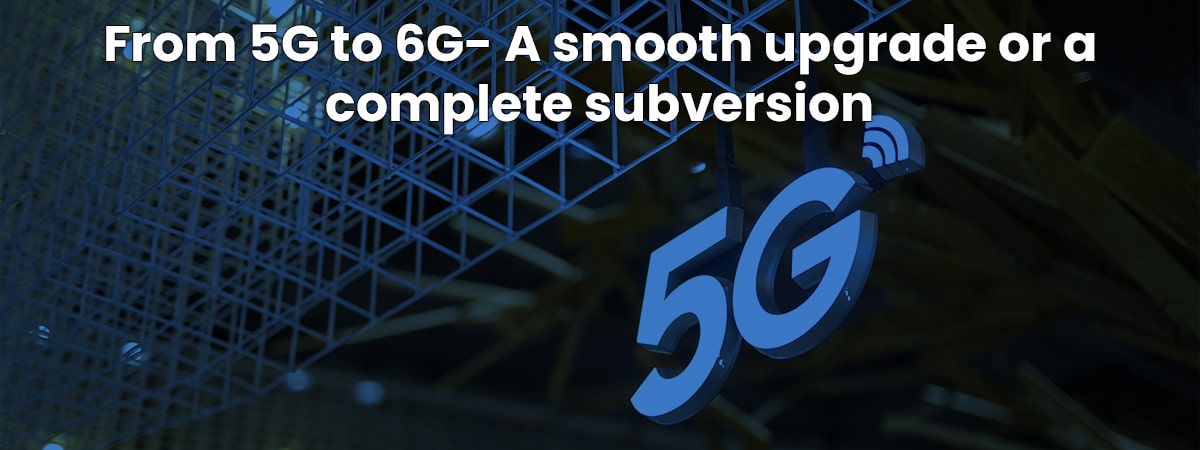The construction of 5G in China and the world is in full swing, and the research and development of global 6G technology is actually in full swing. So from 5G to 6G, is it a smooth upgrade of technology or a complete subversion? To answer this question, it is necessary to understand
What is the difference between 6G communication and 5G communication?
From a tester’s point of view, We summarize it as three major differences:
One of the differences: KPIs are stronger
The test must first be tested according to KPIs, referring to the descriptions of many white papers on 5G and 6G. Compared with 5G, the key KPIs that can be achieved in the system are as follows:
As can be seen from the above figure, compared with 5G, 6G will provide higher-performance wireless connections and the ultimate user experience. The peak rate can reach Tbps, and the user experience rate can reach 10~100Gbps, which is comparable to optical fiber. If it is really possible, then the wireless router at home, or even the ONU, can be discarded.
In addition, the 6G network can provide 0.1ms latency, 10 times the connection density of 5G, and centimeter-level positioning accuracy and extremely high system reliability, providing the possibility for the digitalization of the future metaverse and various vertical industries. . Do you think this KPI is subversive enough?
The second difference: is the wider application
The wider application includes two levels, one is the expansion of the application industry; the other is the expansion of the physical space of the application.
The first is the expansion of the application industry. 5G will basically realize the interconnection of all things, and generate three major application scenarios, which are the well-known enhanced mobile broadband (eMBB), ultra-reliable and low-latency communication (uRLLC), and massive machine types. Communication (mMTC). Then, in addition to continuing to expand these services with the enhancement of KPIs in these applications, 6G has also developed two very critical scenarios, one is artificial intelligence, and the second is network perception. This is due to 6G’s ultra-low latency, closer positioning, and other new performance features.
The expansion in physical space, which mainly refers to the future 6G, will be integrated with satellite communications such as relay satellites and low-orbit satellite communications to truly realize the needs of three-dimensional communications in different dimensions, including air, satellite, ocean, and desert. . In the 6G network environment, a person can not only perceive the environment around him in real-time but also perceive the environment thousands of miles away in an instant, which will bring unexpected surprises to human beings. For example, if you are on a business trip, you can use the camera function of the satellite in 6G communication to take a photo of your yard at any time to see if your pet is still in the yard. Is this app subversive enough?
Difference #3: Testing is harder
This is easy to understand because, in addition to existing technologies, 6G will use newer technologies. There are two very hot technologies now: one is terahertz communication technology, and 6G may use higher frequency bands in the future than the current 5G millimeter wave frequency band, namely Sub-THz (100–300 GHz) and THz frequency band (300 GHz – 3 THz) so that 6G communication can obtain higher bandwidth. However, we all know that the higher the frequency band, the more complicated the design of some devices including chips and amplifiers, and the more difficult it is to test. Keysight is also working with our customers to develop THz and Sub-THz test solutions for 6G communications.
Keysight Technologies Sub-THz Research Test Bench
In addition, there is a very interesting 6G communication pre-research technology, Reconfigurable Intelligent Surfaces, also called intelligent metasurface technology, which is a technology proposed in 3GPP R18. Various countries, including many well-known universities, research institutes, equipment manufacturers, and operators in China, are actively carrying out research and experiments, and have achieved rapid progress and good results. The RIS Technology Alliance was established in December last year, so 2021 has been called “the first year of RIS technology” by industry experts. It is also predicted that RIS technology may land in the 5G-Advanced period. RIS technology is an extremely complex interdisciplinary technology. We will not expand the technical details too much here but only explain its core ideas. In the future, we may do a separate topic on RIS.
As we all know, the actual transmission environment of wireless communication is very complex, with various channel characteristics such as interference, multipath, time delay, and Doppler frequency shift. Traditional communication systems do their best to study the characteristics of transmission channels, define various transmission channel models, and then try to adapt to the channel characteristics as much as possible in circuit design and system design, so as to obtain good communication results. . The actual practice is to use the channel simulator in the laboratory to simulate the real transmission environment in the process of product and system R&D and design, and conduct various performance tests on the product. Keysight’s channel simulators help users greatly optimize their product designs.
Keysight’s PropSim Series of Channel Simulators: Simulation for various communication channels
The concept of RIS is different. It is no longer “resigned”, but takes the initiative to “change” the transmission environment of the channel. The simple understanding is to collect the signals sent by the transmitter through the surface of a special medium (synthetic supermaterial) with controllable characteristics, and then “transfer” these signals to the receiver, thereby improving the effectiveness of communication. At present, some pre-research tests for single-cell and static single-user cases are already underway, but there is still a long way to go before the real implementation. But in any case, most researchers believe that smart metasurface technology is a transformative emerging technology for regulating electromagnetic waves with low cost and low energy consumption. Do you think this technology is subversive enough?
